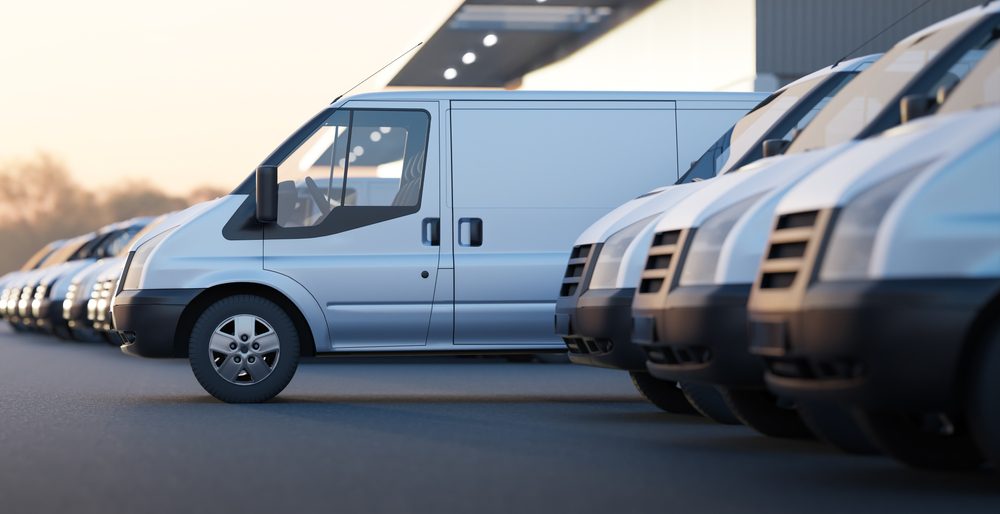As anyone in dealership management, from dealer principal to GM, will tell you, they’re always on the lookout for additional profit opportunities. However, many of these same people haven’t seriously considered commercial (or fleet/B2B) sales. Why?
It might be that commercial vehicle sales are outside the normal retail background for many dealer principals and GMs; if so, that’s understandable. Or perhaps it has more to do with the traditional challenge of accessing commercial vehicle data; after all, there are many vendors on the retail side of the house that help with websites, marketing, CRM, and so on. But, the same cannot be said for working with commercial vehicles since those who shop for these work trucks and vans are businesses that have very specific needs, from the electrician who is growing and needs a second van, to the large landscaping company that needs to turn their fleet every couple of years due to heavy use.
Dealers who are already selling commercial vehicles recognize the opportunity these buyers represent – not just because they’re buying work trucks and vans for their businesses, but also because they (and their staff) are buyers of personal vehicles. In other words, these commercial sales represent a stream of business well beyond the work vehicle the business owner is purchasing today. And don’t discount the service opportunity – these vehicles need maintenance on a schedule. If these trucks and vans aren’t on the road, that business is losing money, so it’s critical that they’re well maintained and on the road every day.
So what kind of numbers are we talking about? Here are a few stats to whet your appetite:
- Commercial vehicles are used by industries that support almost 80% of the GDP, and this sector will be a growth opportunity for the next decade.
- Price values are rising for commercial vehicles; the average price of just used vans rose from $33,000 in 2020, to $40,000 in 2021.
- Despite inventory challenges seen across both the retail and commercial sectors, commercial vehicle sales were up more than 11% last year compared to 2020.
- Certain types of upfitted trucks can generate $15,000 – $20,000 in profit to your bottom line.
If you’re now thinking you need to check into the commercial vehicle game, or you’re simply ready to compare your B2B selling and servicing approach, what are your next steps?
- Lean into the challenge and fully commit. If you don’t, someone else surely will.
- Learn all you can about the commercial vehicle space. Use the resources available – there are many. For example, there are associations dedicated to commercial sales, like NTEA, and there are truck clubs affiliated with specific OEMs, such as the National Ford Truck Club. You should also seek out seminars and workshops that help keep you current, such as the CVBS (Commercial Vehicle Business Summit) this Spring (and you are warmly invited to our workshops at NADA this year – Today’s Foundation for the Mobility & Profit Era – 3/10 @ 1pm in W203 or 3/11 @ 10:30 in W203).
- Develop a plan for success. If you were taking a trip, you wouldn’t set out on the road without knowing where you wanted to end up. Similarly, a business roadmap will help you reach your destination on your commercial vehicle journey. Here’s a link to access a Commercial Vehicle Playbook to help get you started. Note that this is chapter 1 of the Playbook so be sure to keep an eye out for future chapters as they are released.
- Establish a commercial vehicle sales department because selling to this market is different than selling to retail customers. Having a department dedicated to B2B sales, with people who know how to sell in this environment (we call them Truck Pros) is essential.
- Learn the nuances of your local/regional commercial vehicle market. Join local trade associations and begin to have your team build relationships (this relationship selling style is critical in commercial sales).
- Get the right tools for the job. For example, you’ll want a website that’s dedicated to these customers – one that demonstrates you serve their business needs, and one that makes it easy for them to efficiently find what they’re looking for. With the current inventory challenges, you’ll also want to be sure you have alternative sources for the work trucks, vans and SUVs your customers need.
Taking these steps will get you on the road to commercial vehicle success. But, just like your retail dealership business, it’s always evolving, which means you too want to continuously learn, adapt and seek out opportunities. After all, it’s how you’ve gotten to where you are today and it’s what will keep you going, through challenging times and good times.
If you want to talk more about the commercial vehicle business, and are interested in how we partner for success with our dealers, stop by and see us at one of the following shows this month.
- 2022 NADA Show – Booth #1356W
- Work Truck Week 2022 – Booth #5685
Did you enjoy this article from Kathryn Schifferle? Read other articles on CBT News here. Please share your thoughts, comments, or questions regarding this topic by submitting a letter to the editor here, or connect with us at newsroom@cbtnews.com.
Be sure to follow us on Facebook and Twitter to stay up to date or catch up on all of our podcasts on demand.
While you’re here, don’t forget to subscribe to our email newsletter for all the latest auto industry news from CBT News.










